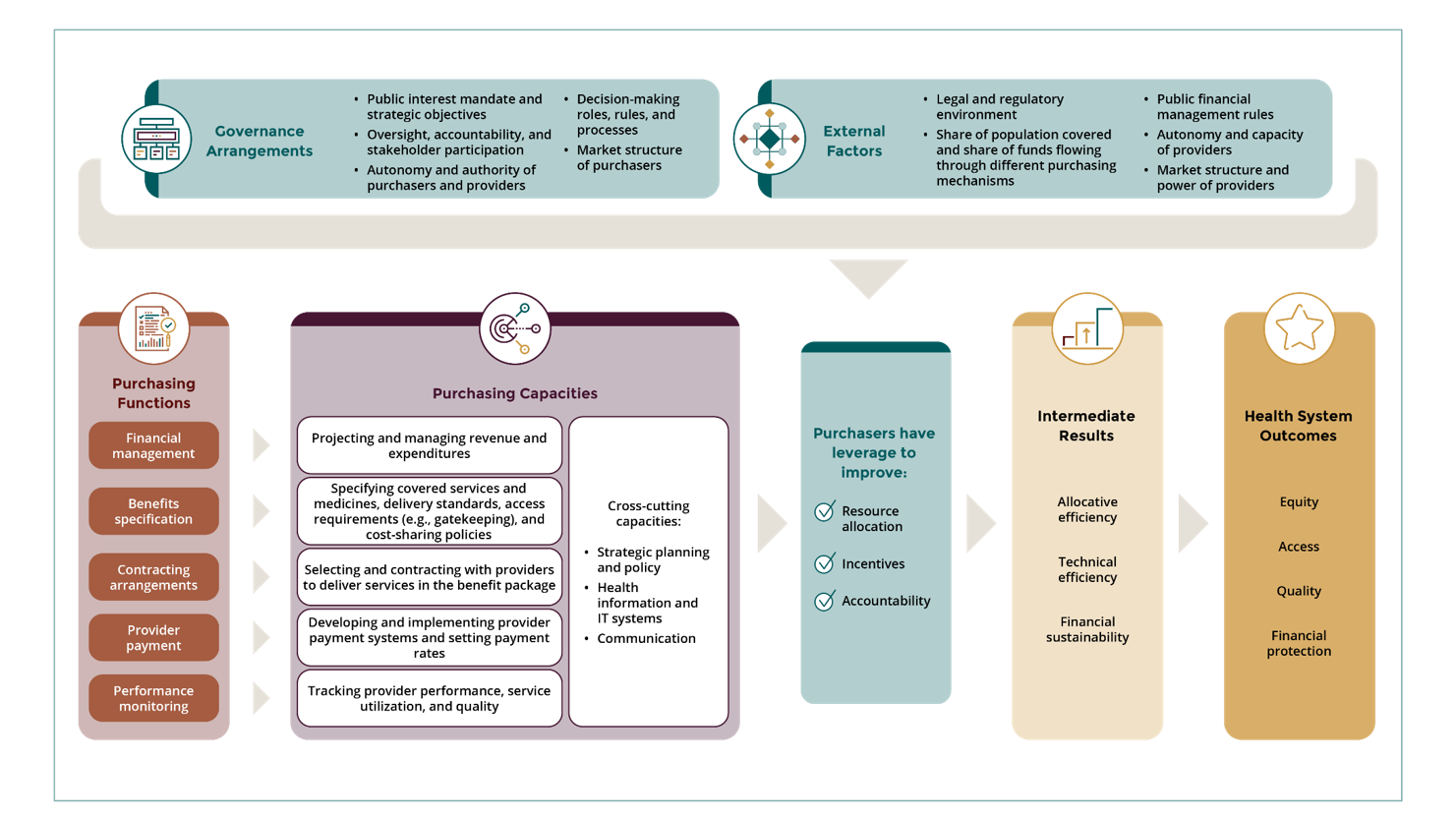
Purchasing Functions and Governance Structures
A strong strategic purchasing system carries out a set of core functions that are supported by clear institutional arrangements that allocate the responsibility for carrying out the functions, and governance structures to provide oversight, accountability and reporting lines, and to ensure effective stakeholder participation.
The core purchasing functions include:
- Financial management — the purchaser’s ability to project and manage revenue and expenditures. The purchaser needs to know how much money is available to provide the benefit package and to pay providers for contracted services.
- Benefits specification – systems and policies to determine what services and interventions will be included in the benefit package and specify service delivery standards, how the services can be accessed (including gatekeeping policies), how much of the cost of the services will be covered by the purchaser and accompanying cost-sharing policies, and which medicines are covered.
- Contracting arrangements— systems and policies for selecting public and private providers to deliver the covered services, setting the terms and conditions in the contracts, and entering into and enforcing contracts.
- Provider payment — systems and policies for developing and implementing provider payment systems and setting payment rates to create the right incentives for providers to direct their behavior toward delivering prioritized services efficiently while ensuring good quality.
- Performance monitoring — systems and processes for tracking provider performance, providing feedback for improvement, and carrying out system-level analysis to inform purchasing decisions.
Purchasers also need to have the capacity for strategic planning and policy development, the capacity to generate information on health needs and system capacity to make purchasing decisions that prioritize the use of funds within the constraints of the current system, and for strategic communications with both health care providers and the covered population.
Results of Strategic Purchasing
When these elements of a purchasing system are in place, the purchaser can directly influence the allocation of resources (prioritizing services and population groups, geographies, types of providers, etc.), create incentives that drive individual provider behavior toward objectives, and accountability through contract enforcement and performance monitoring. These levers can in turn exert influence on intermediate results to improve efficiency and sustainability of the health system. In the long run, improvements in the purchasing functions and the influence on these levers on the health system outcomes of interest result in equitable access to good quality health services without financial barriers.
External Factors
The influence of the levers can be enhanced or mitigated, however, by factors outside of the control of the purchaser. Some of these factors include the share of funds under the control of the purchaser, the negotiating power of (especially private) providers, and the financial and managerial autonomy of (public) providers. Together, these factors affect how much purchasing power purchasers have to influence overall resource allocation in the system, their ability to create financial and nonfinancial incentives to influence provider behavior, and the ability of providers to respond to those incentives.

